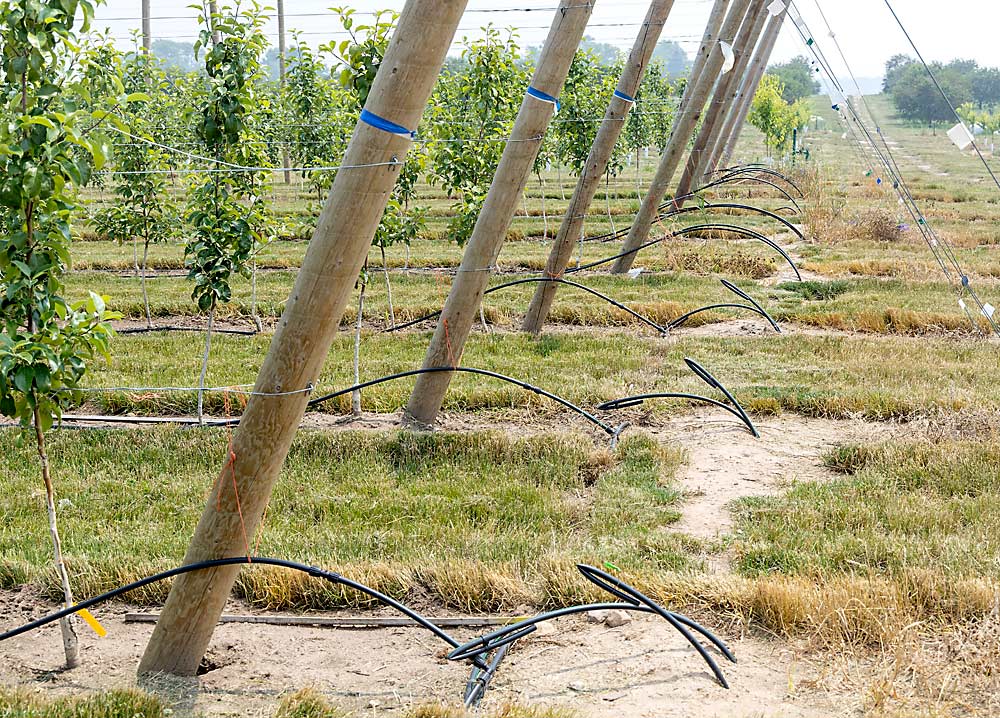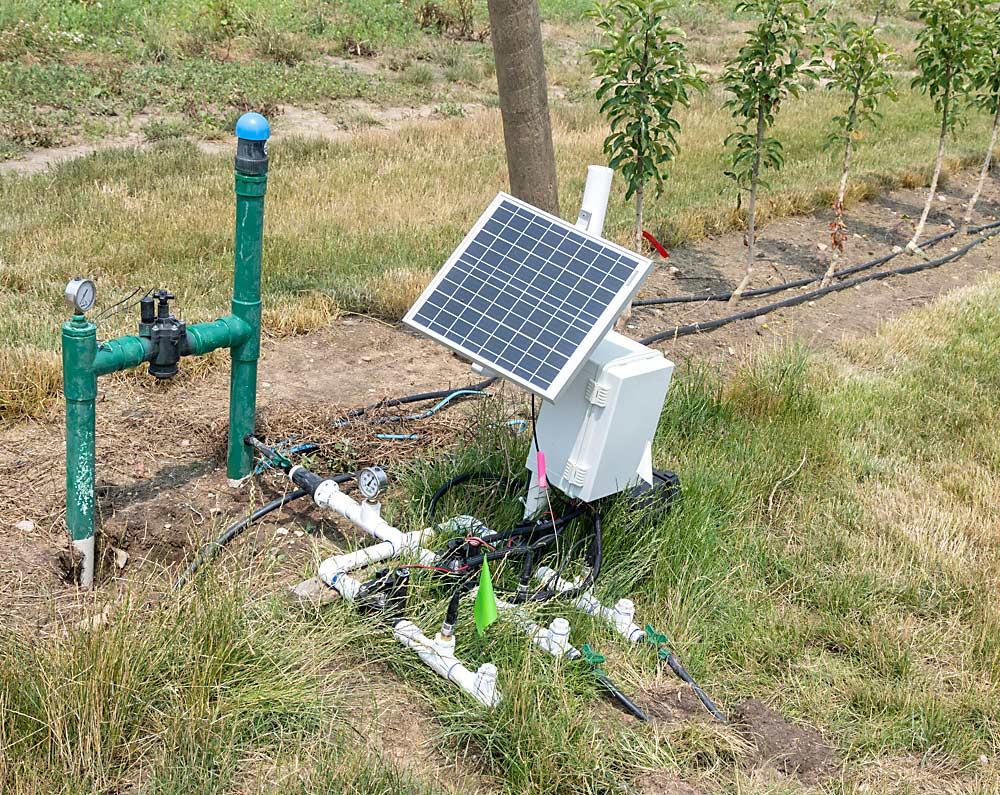[ad_1]

The fruit-growing regions of West-central Michigan and Northwest Michigan, both bordering Lake Michigan, are known for their generally sandy soils.
But both regions also are home to a growing number of high-density apple plantings that require trickle irrigation. Because high-density apples on sandy soils is a relatively new phenomenon in the state, growers and researchers are still figuring out the most productive ways to irrigate them. It’s mainly a scheduling question: How much water should they apply, and when?
To answer that, Michigan State University irrigation specialist Younsuk Dong and MSU tree fruit educator Emily Lavely are conducting a multiyear study at the West Central Michigan Research and Extension Center. Their goal is to develop or determine an irrigation scheduling method that will optimize fruit yield and quality for high-density apple plantings in sandy soils.

In a high-density research block — Honeycrisp and Gala on Geneva 11, planted in 2022 — they set up three methods for triggering automatic irrigation scheduling:
—Evapotranspiration data from MSU’s Enviroweather system.
—Soil water-holding capacity informed by soil moisture sensors.
—Canopy temperature based on infrared sensors.
They collected the first year of data in 2023, and they plan to conduct a similar multiyear trial at MSU’s Northwest Michigan Horticulture Research Center, Dong said.
“We want growers to feel comfortable with the irrigation tools available — give them information to make decisions, and get a better understanding of what’s going on below ground,” Lavely said.
The project is funded by applesauce producer GoGo squeeZ, West Central Michigan Horticultural Research Inc., the Michigan State Horticultural Society and a Michigan Department of Agriculture and Rural Development (MDARD) Specialty Crop Block Grant. In addition, they’re starting a new project, funded by MDARD, that will study fertigation applications.
West-central Michigan grower Jeremiah Palmer is curious to see what the MSU researchers find out, and he hopes they’ll eventually conduct some trials in his orchard. He’s already working with Dong on automatic irrigation scheduling of vegetables using soil moisture sensors.
Palmer sells most of his apples fresh and has transitioned most of his blocks to high-density, which requires drip irrigation. When he joined the family farm 14 years ago, all the irrigation systems were controlled by manual valves. With roughly 20 valves on about 120 acres of tree fruit, there were times he’d spend all day running around, turning valves on and off.
To make things easier, Palmer switched to electric timer-controlled valves that turn on and off automatically. That saves him a lot of time, but knowing when to tell the valves to turn on, and for how long, still requires some guesswork.
Palmer’s current decision-making method combines MSU Enviroweather data with his own field observations. He waters his apple blocks two to three times a week for 1 to 1.5 hours at a time, depending on soil type. But he’d like more certainty.
“I’d like to take it a step further, so I’m watering when the tree needs it, instead of me going, ‘I think you need it,’” he said.
Watering at optimal times and in optimal amounts would save Palmer time, and the resulting improvements in fruit finish and packouts would make him money, he said.
“You get peace of mind when you know your stuff is watered correctly,” Palmer said.
—by Matt Milkovich
[ad_2]









